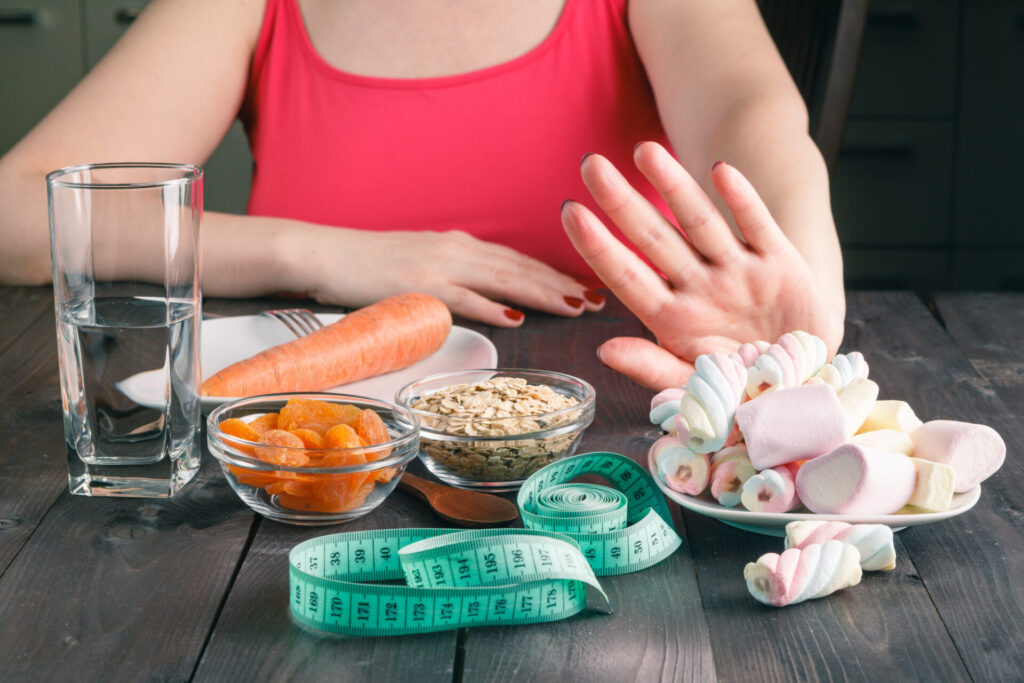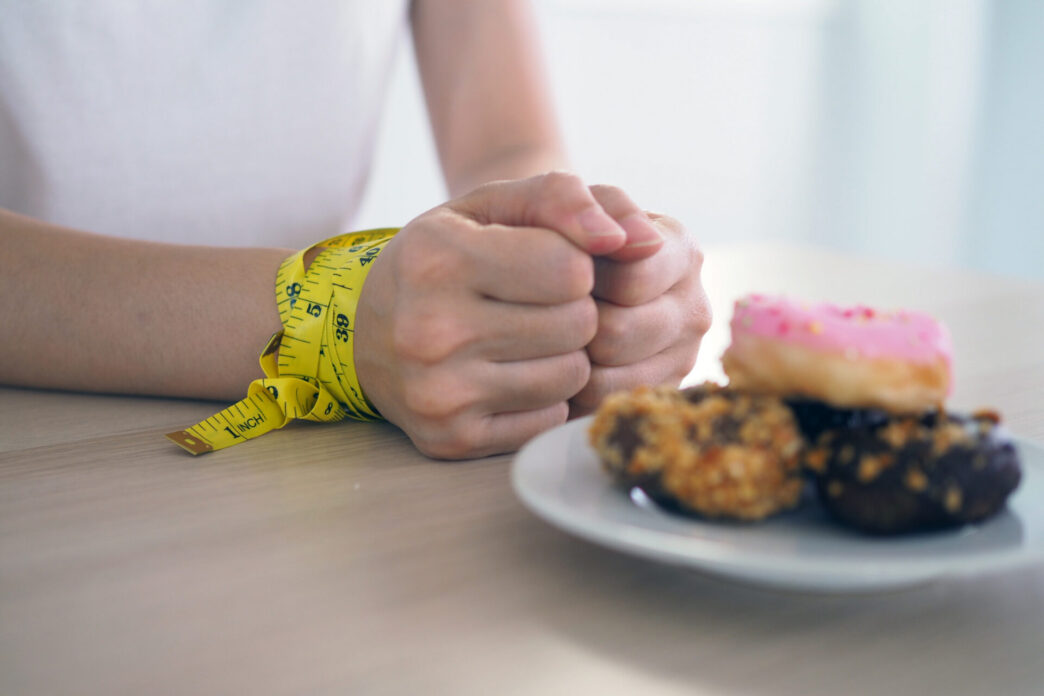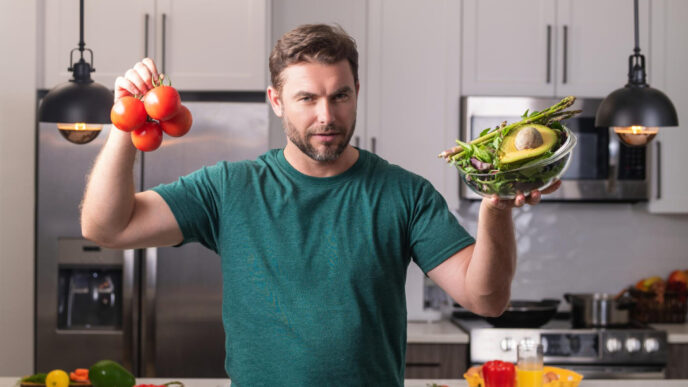Why We Struggle with Sugar—and How to Regain Control
Craving something sweet? You’re not alone. Millions of people around the world feel an almost magnetic pull toward sugar—and not just in the form of desserts. From morning cereals to midday “healthy” snacks and late-night treats, sugar hides in plain sight and plays a powerful role in our lives.
But here’s the truth: taming sugar cravings naturally isn’t about willpower or extreme diets. It’s about understanding how sugar affects your brain, hormones, and habits—and then using simple, science-backed strategies to take back control.
“You don’t have to quit sugar overnight—you just need a better plan.”
🍭 Is It Really Sugar You’re Craving?
Often, what feels like a sugar craving is actually your body asking for something else:
- Energy when you’re tired or dehydrated
- Comfort when you’re stressed or anxious
- Routine when you’re simply used to that sweet snack at a certain time
By learning how to spot these signals and respond wisely, you can reduce sugar intake without feeling deprived.
💡 Why “Cutting Back” Doesn’t Always Work
Trying to stop sugar addiction cold turkey might seem noble, but for most people it leads to rebound cravings. That’s because sugar affects the dopamine system in your brain—creating a pattern of reward and desire that’s tough to break without a strategy.
The good news? You don’t need to quit sugar completely. Instead, you can:
✔️ Make smarter food choices
✔️ Balance your blood sugar
✔️ Find natural sweet alternatives
✔️ Build healthy habits that last
🛠️ This Guide Will Show You How
In the sections that follow, you’ll discover:
- What triggers sugar cravings in the first place
- How sugar impacts your body and mind
- Nutritional tactics and psychological tools that work
- Low-sugar swaps and recipes that don’t feel like sacrifices
- How sleep, movement, and mindset can reshape your relationship with sugar
Whether you’re trying to tame sugar cravings naturally, find healthy sugar alternatives, or finally learn how to reduce sugar intake for good, this guide will give you the tools to make it happen—without guilt or restriction.
✅ Ready to break the cycle? Let’s dive into the real reasons behind sugar cravings and how to outsmart them—one small step at a time.

Understanding Sugar Cravings
Sugar cravings are not just a matter of personal preference—they are driven by complex biological, psychological, and environmental factors. Understanding why we crave sugar is the first step in learning how to manage these cravings effectively.
Why Do We Crave Sugar?
The human body is naturally wired to seek out sugar. This is because carbohydrates, including sugars, are a quick and efficient source of energy. Our ancestors relied on sweet foods like fruits and honey for survival, as they provided necessary calories and nutrients. However, in the modern world, sugar is no longer scarce—it is everywhere, often in processed and refined forms that can be harmful to our health.
Some of the key reasons why sugar cravings occur include:
✔️ Blood Sugar Imbalances – When we consume sugary foods, blood sugar levels spike quickly, giving us a short burst of energy. However, this is followed by a sharp drop (a “crash”), leading to cravings for more sugar to restore energy levels.
✔️ Brain Chemistry and Dopamine Release – Sugar stimulates the brain’s reward system, triggering the release of dopamine, the “feel-good” neurotransmitter. This creates a cycle where we crave sugar for the temporary pleasure it brings.
✔️ Nutrient Deficiencies – A lack of key nutrients, such as magnesium, zinc, and chromium, can lead to increased sugar cravings as the body seeks quick energy.
✔️ Emotional and Psychological Triggers – Stress, boredom, and emotional distress often lead to sugar cravings as a form of comfort or distraction.
The Role of Dopamine in Sugar Addiction
Dopamine is a neurotransmitter that plays a major role in motivation and pleasure. When we consume sugar, dopamine is released, making us feel temporarily happy and satisfied. Over time, frequent sugar consumption can lead to dopamine resistance, meaning we need more sugar to achieve the same pleasurable effect. This is why sugar addiction can develop in a similar way to drug addiction, making it difficult to cut back.
Research has shown that high sugar intake can alter brain chemistry, reducing impulse control and reinforcing cravings. This is particularly concerning because sugar-rich diets have been linked to mood swings, anxiety, and even depression.
How Processed Foods Intensify Sugar Dependence
Processed foods often contain hidden sugars that make it even harder to control cravings. Many packaged foods, including cereals, yogurts, sauces, and even “healthy” snacks, are loaded with added sugars under different names like:
- High-fructose corn syrup
- Maltose
- Dextrose
- Cane juice
- Agave nectar
These hidden sugars can cause blood sugar spikes, triggering the cycle of craving more sugar to maintain energy levels. Additionally, processed foods often lack fiber, protein, and healthy fats, which are essential for keeping blood sugar stable and reducing hunger.
Understanding the biological and psychological triggers behind sugar cravings allows us to develop strategies to manage them effectively. By addressing the root causes, we can break free from the cycle and create a healthier relationship with food.
Health Risks of Excessive Sugar Consumption
While sugar may provide a quick burst of energy and temporary satisfaction, excessive consumption can have serious long-term health consequences. Many people underestimate the impact of sugar on overall health, thinking of it only in terms of weight gain. However, research has linked high sugar intake to a range of metabolic, cardiovascular, and neurological issues.
Effects on Metabolism and Weight Gain
One of the most immediate effects of excessive sugar intake is metabolic disruption. When sugar is consumed in large amounts, especially in the form of refined carbohydrates and sugary drinks, it leads to:
✔️ Insulin Resistance – Frequent spikes in blood sugar cause the body to release insulin, the hormone responsible for regulating glucose levels. Over time, cells become resistant to insulin, leading to type 2 diabetes and metabolic syndrome.
✔️ Increased Fat Storage – Excess sugar, particularly fructose, is converted into fat by the liver, contributing to visceral fat accumulation (fat around internal organs), which is linked to heart disease and inflammation.
✔️ Leptin Resistance – Leptin is a hormone that regulates hunger and satiety. High sugar consumption disrupts leptin signaling, making it harder to feel full and leading to overeating.
Scientific Insight: A study published in The American Journal of Clinical Nutrition found that individuals consuming high amounts of sugar-sweetened beverages had a 60% greater risk of obesity compared to those who consumed little to no sugar.
Sugar’s Impact on Mental Health
Sugar does not just affect physical health—it also has a profound impact on mental well-being. Studies have shown that excessive sugar intake is associated with:
✔️ Mood Swings and Irritability – Sugar causes rapid fluctuations in blood glucose levels, leading to sudden mood changes, anxiety, and even aggression.
✔️ Increased Risk of Depression – Chronic high sugar intake has been linked to an increased risk of depression and anxiety disorders. A study published in Scientific Reports found that people who consumed high levels of refined sugar were significantly more likely to develop depressive symptoms.
✔️ Cognitive Decline – Diets high in sugar may contribute to memory problems and an increased risk of Alzheimer’s disease. Research suggests that excess sugar intake causes inflammation in the brain, negatively affecting cognitive function.
The Link Between Sugar and Chronic Diseases
Excessive sugar consumption is a major risk factor for several chronic diseases, including:
| Disease | How Sugar Contributes |
|---|---|
| Heart Disease | Increases inflammation, raises blood pressure, and contributes to high triglyceride levels. |
| Type 2 Diabetes | Causes insulin resistance, leading to elevated blood sugar levels and increased risk of diabetes. |
| Liver Disease | Excess fructose overloads the liver, contributing to non-alcoholic fatty liver disease (NAFLD). |
| Cancer | High sugar intake is linked to chronic inflammation, which may promote cancer cell growth. |
| Dental Problems | Sugar feeds harmful bacteria in the mouth, leading to tooth decay and cavities. |
How Much Sugar Is Too Much?
According to the American Heart Association (AHA), the recommended daily limit for added sugar is:
- Men: No more than 36 grams (9 teaspoons)
- Women: No more than 25 grams (6 teaspoons)
- Children: No more than 25 grams (6 teaspoons)
However, the average American consumes over 77 grams (19 teaspoons) of added sugar per day—more than triple the recommended amount. This overconsumption significantly increases the risk of metabolic disorders and chronic diseases.

Practical Strategies to Reduce Sugar Cravings
Breaking free from sugar cravings requires a combination of nutritional, lifestyle, and behavioral strategies. While cutting out sugar completely may seem daunting, taking a structured approach can help reduce cravings naturally and make the transition easier. Below are evidence-based tactics to regain control over sugar consumption.
Choosing the Right Nutrients to Balance Blood Sugar
One of the most effective ways to curb sugar cravings is to stabilize blood sugar levels. Sudden spikes and crashes in blood glucose often lead to intense cravings for sweets. To prevent this, focus on foods that provide steady, long-lasting energy:
✔️ Protein: Helps regulate blood sugar and keeps you full longer. Sources: eggs, lean meats, fish, beans, Greek yogurt.
✔️ Healthy Fats: Slow down sugar absorption and promote satiety. Sources: avocados, nuts, seeds, olive oil.
✔️ Fiber: Slows digestion and prevents sugar spikes. Sources: vegetables, legumes, whole grains, flaxseeds.
Pro Tip: Start your day with a high-protein breakfast (e.g., eggs with avocado and whole-grain toast) instead of sugary cereals to prevent cravings later in the day.
Hydration: A Key Player in Sugar Control
Dehydration is often mistaken for hunger or sugar cravings. When the body lacks water, it sends mixed signals that can lead to unnecessary snacking on sweets.
✔️ Drink water before reaching for sugar – Sometimes, a glass of water is all you need to suppress a craving.
✔️ Infuse your water with citrus or herbs – Lemon, mint, or cucumber can add natural flavor without sugar.
✔️ Limit sugary drinks – Soft drinks, flavored coffees, and energy drinks can make sugar cravings worse due to their high glycemic impact.
Quick Fix: Try replacing soda with sparkling water and a splash of fresh lemon juice for a refreshing alternative.
The Power of Protein and Healthy Fats
✔️ Protein is essential for reducing cravings because it regulates dopamine levels, preventing the brain from seeking sugar for a dopamine boost. A study in The American Journal of Clinical Nutrition found that high-protein diets significantly reduce hunger and sugar cravings.
✔️ Healthy fats slow down digestion and help maintain stable blood sugar levels, reducing the likelihood of sudden cravings.
Meal Idea: A salad with grilled salmon, avocado, walnuts, and olive oil dressing can keep sugar cravings at bay for hours.
How Fiber Helps Curb Sugar Addiction
Fiber slows glucose absorption, keeping blood sugar steady and preventing energy crashes that lead to sugar cravings.
✔️ Best fiber sources to fight sugar cravings:
- Chia seeds and flaxseeds
- Leafy greens (spinach, kale, arugula)
- Berries (strawberries, raspberries, blueberries)
- Whole grains (quinoa, brown rice, oats)
Easy Swap: Replace white rice with quinoa or cauliflower rice to add more fiber and reduce sugar spikes.

Psychological Tactics to Overcome Sugar Addiction
While nutritional strategies help stabilize blood sugar, overcoming sugar cravings also requires addressing the psychological and emotional factors that drive them. Many sugar cravings stem from habits, stress, and emotional triggers rather than actual hunger. By understanding these patterns and implementing mindful strategies, you can break free from sugar dependence and develop a healthier relationship with food.
Mindful Eating Techniques
Mindful eating is one of the most powerful tools for overcoming sugar addiction. It involves being fully present while eating and paying attention to hunger cues, portion sizes, and emotional triggers.
✔️ Slow Down – Eating too quickly can lead to overeating and sugar cravings. Chew slowly, savor each bite, and give your body time to register fullness.
✔️ Recognize Real Hunger vs. Emotional Cravings – Ask yourself: “Am I truly hungry, or am I eating out of boredom, stress, or habit?”
✔️ Engage Your Senses – Notice the texture, flavor, and aroma of your food to create a more satisfying experience, reducing the need for excessive sugar.
✔️ Avoid Multitasking While Eating – Watching TV or scrolling through your phone can lead to mindless eating and an increased intake of sugary foods.
Pro Tip: Before reaching for a sugary snack, drink a glass of water and wait 10 minutes. If the craving persists, opt for a healthier alternative.
Identifying Emotional Triggers for Sugar Consumption
Many people turn to sugar for comfort, stress relief, or as a reward. Identifying your personal triggers is key to breaking the cycle.
Common emotional triggers include:
- Stress – High stress increases cortisol levels, making sugar more tempting as a quick fix.
- Boredom – Mindlessly snacking on sweets often happens when there’s nothing else to do.
- Fatigue – Lack of sleep or energy can lead to sugar cravings as the body seeks a quick energy boost.
- Sadness or Anxiety – Sugar activates the brain’s reward system, providing temporary relief from negative emotions.
✔️ Strategy: Keep a food journal to track when and why you crave sugar. Look for patterns and replace emotional eating with non-food coping mechanisms, such as deep breathing, a short walk, or listening to music.
Building a Sustainable Mindset for Long-Term Success
Overcoming sugar addiction isn’t about strict deprivation—it’s about creating a sustainable, balanced approach that allows for occasional indulgence without guilt.
✔️ Adopt the 80/20 Rule – Eat whole, nutrient-dense foods 80% of the time while allowing 20% flexibility for small treats.
✔️ Reframe Your Thinking – Instead of saying “I can’t have sugar,” say “I choose to eat foods that nourish my body.”
✔️ Celebrate Small Wins – Every time you resist a craving or choose a healthier option, acknowledge your progress.
Long-Term Perspective: Studies show that reducing sugar intake for just 2 weeks can reset taste buds, making naturally sweet foods like fruits more satisfying and reducing dependence on processed sugar.
References and Inspirational Resources
- Lustig, Robert H. Fat Chance: Beating the Odds Against Sugar, Processed Food, Obesity, and Disease. Hudson Street Press.
- Harvard T.H. Chan School of Public Health – Research and data on sugar and chronic disease.
- American Heart Association – Guidelines on added sugar intake and cardiovascular health.
- Psychology Today – Articles on emotional eating, sugar addiction, and behavioral change.
- The American Journal of Clinical Nutrition – Studies on dietary protein and its impact on cravings.
- Mayo Clinic – Educational resources on blood sugar management and sugar detox strategies.
- Cleveland Clinic – Evidence-based advice on reducing sugar cravings and improving metabolic health.















